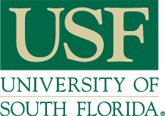Below is a summary of the abstract you submitted. Presenting author(s) is shown in bold.
If any changes need to be made, you can modify the abstract or change the authors.
You can also download a .docx version of this abstract.
If there are any problems, please email Dan at dar78@pitt.edu and he'll take care of them!
This abstract was last modified on April 7, 2024 at 4:33 p.m..

Bacteriophages are viruses capable of infecting and lysing specific bacteria. Lysogenic phages can confer immunity to the host to avoid additional phage infections. There are several pathways to immunity. Previous work has identified gene 45 from F1 cluster phage Girr as encoding a transmembrane protein that when exogenously expressed in M. smegmatis using the pExTra inducible plasmid, completely inhibits F1 cluster phages Girr and Bipolar from infecting the host. Gene 45 is located in the immunity cassette near the immunity repressor. Avani is an F2 cluster phage and has gene 51 that encodes a homolog to Girr gp45 that is 98% identical. As with gp45, Avani gp51 confers immunity to F1 cluster phage infection but does not block F2 phage infection. Gene 104 in Avani encodes a 156 amino acid protein and is a single reverse gene found in the 3’ end of the genome. This gene is only found in the eight F2 cluster phages. Bioinformatic analysis using Topcons and DeepTMHMM predicts that gp104 is a membrane protein with three transmembrane domains and a topology that is N-in-out-in-C-out. Exogenous expression of gp104 in M. smegmatis is able to specifically block both Avani and Che9 (F2) from infecting the host but does not block the F1 cluster phages Girr or Bipolar. Truncation of the N-terminal 23 amino acids that removes the first TMS, results in complete loss of the immunity phenotype. Similarly, truncation of the extracellular C-terminal 23 amino acids also completely abolishes the immunity phenotype. Thus, F2 cluster phage Avani contains two distinct genes that encode membrane proteins involved in immunity. It is unclear if these proteins interact with each other and studies are underway to determine if there are any host proteins that interact with gp45 or gp104. However, the fact that truncation of the only large extracellular portion of gp104 creates a loss of function, suggests that the gp104 protein may function by blocking adsorption. Since host immunity would be a detriment to the use of phages in health and environmental applications, the identification of these proteins may be helpful in screening phages for downstream applications or in genetic engineering of phages. We thank the SEA GENES team for support of these studies.
